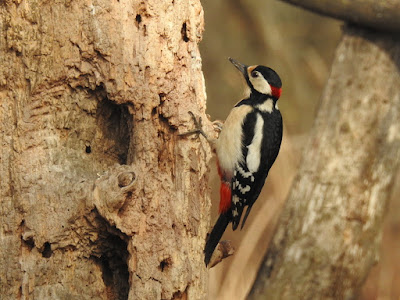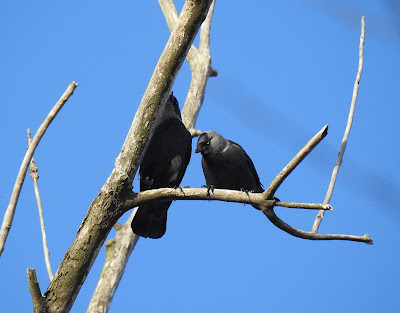 |
| Bearded Tits Panurus biarmicus (slo. brkata sinica) have appeared a few days ago in the reedbeds of the reserve, together with Penduline Tits Remiz pendulinus (slo. plašica). |
 |
| Vast reedbed areas represent a typical scene in the Danube delta. |
 |
| Listening out for Bearded Tits at the edge of a reedbed. |
 |
| White-tailed Eagle Haliaeetus albicilla (slo. belorepec) - adult. |
 |
| After two weeks from our last Otters Lutra lutra (slo. vidra), today we saw another two, swimming calmly in a canal, diving and even taking a run on the bank. |
 |
| A pair of Little Owls Athene noctua (slo. čuk) is usually showing very well in front of one of the photo-hides. At night we have them singing on our rooftop! |
 |
| There are still small numbers of Whooper Swans Cygnus cygnus (slo. labod pevec) around the Danube, sometimes flying above the reserve and signalling their presence with the trumpet-like calls. |
 |
| Grey-headed Woodpecker Picus canus (slo. piva) - one of the commonest birds at all! They like areas of willows and poplars along canals and reedbeds and are very vocal at this time of year. |
 |
| Great Spotted Woodpecker Dendrocopos major (slo. veliki detel). |
 |
| Black Woodpecker Dryocopus martius (slo. črna žolna) - one of our main work targets at the moment: we are still intensively following the movements of at least 3 pairs graviting around the reserve and nearby Letea forest. The bird in the first pic was actively excavating a nest hole - VIDEO (watch HD). |
 |
| Fresh (above) and old (below) feeding signs of Black Woodpecker. |
 |
| Footprints of Badger Meles meles (slo. jazbec) - a common sight at the reserve. |
 |
| Brackish lagoon with Shelducks Tadorna tadorna (slo. duplinska kozarka) and the village of Periprava in the back. |
 |
| Street life in Periprava village. |
 |
| Tree Sparrow Passer montanus (slo. poljski vrabec) almost completely replaces the otherwise commoner House Sparrow Passer domesticus (slo. domači vrabec), found in cities and urban environments. |
 |
| Old willow (Salix sp.) in a patch of alluvial forest by the Danube. |
 |
| Tussilago farfara - our first spring flower in the delta! |















